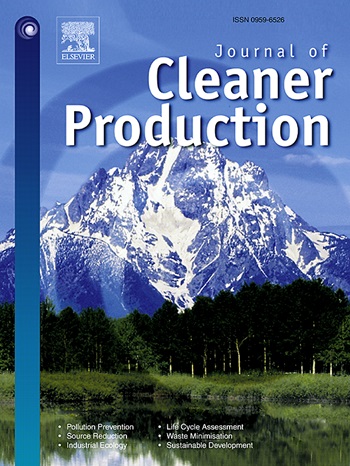Investigating the heterogeneity of driving mechanisms and multi-dimensional policy pathways in ecosystem service supply-demand relationships: a case study of the Shandong Peninsula urban agglomeration
IF 9.7
1区 环境科学与生态学
Q1 ENGINEERING, ENVIRONMENTAL
引用次数: 0
Abstract
Rapid urbanization exacerbates the challenges associated with the sustainable management of ecosystem services (ESSM). This study selected eight core municipalities in the initial stages of the Shandong Peninsula Urban Agglomeration as case study sites, developing a comprehensive analytical framework by integrating the InVEST and GTWR models with various quantitative techniques, including LISA, RDA, and SOM. Centering on the ecological supply-demand ratio (ESDR), this framework was employed to uncover the spatiotemporal differentiation patterns of the complex challenges in ESSM, along with their driving factors, and summarized the experiences and limitations of existing policy pathways and urban development models, offering multi-level optimization recommendations. The results indicated that the principal challenges in ESSM within the study area were characterized by a general decline in surplus levels and a pronounced increase in spatial mismatches. The primary drivers of these issues were Pop and the proportion of blue-green space (Pbgs). The driving force of Pop on each ESDR, excluding ESDRFP, decreased within a range of 17.14 %–49.21 %, while the driving force of Pbgs on each ESDR, excluding ESDRWY, decreased within a range of 18.51 %–191.83 %. The clustering types and functional characteristics of ESDR demonstrated significant variation across spatial scales. Specifically, the development path at the municipal level remained highly stable, while at the district-county level, a significant transformation occurred, resulting in an overall 13.55 % improvement in the policy alignment of the study area. Our research framework developed a differentiated regulatory strategy by integrating the multi-scale perspective of natural spatial patterns and administrative boundaries, thereby expanding conventional approaches to ESSM. This framework facilitated the achievement of supply-demand equilibrium and equitable distribution of ecosystem services across multiple scales, offering significant theoretical and practical implications for urban agglomerations, both within the Shandong Peninsula and beyond.


生态系统服务供需关系的异质性驱动机制与多维政策路径研究——以山东半岛城市群为例
快速城市化加剧了与生态系统服务可持续管理(ESSM)相关的挑战。本研究选择山东半岛城市群初始阶段的8个核心城市作为案例研究点,通过将InVEST和GTWR模型与LISA、RDA和SOM等多种定量技术相结合,构建了一个全面的分析框架。该框架以生态供需比(ESDR)为中心,揭示了生态供需比复杂挑战的时空分异格局及其驱动因素,总结了现有政策路径和城市发展模式的经验与局限性,提出了多层次的优化建议。结果表明,研究区生态系统生态管理面临的主要挑战是剩余水平普遍下降,空间错配明显增加。这些问题的主要驱动因素是Pop和蓝绿空间的比例(Pbgs)。除ESDRFP外,各ESDR上Pop的驱动力下降幅度在17.14% ~ 49.21%之间;除ESDRWY外,各ESDR上Pbgs的驱动力下降幅度在18.51% ~ 191.83%之间。ESDR的聚类类型和功能特征在空间尺度上存在显著差异。其中,市一级的发展路径保持高度稳定,区县一级的发展路径发生了重大转变,研究区政策一致性总体提升13.55%。我们的研究框架通过整合自然空间格局和行政边界的多尺度视角,开发了差异化的监管策略,从而扩展了传统的生态环境管理方法。该框架有助于实现多尺度生态系统服务的供需平衡和公平分配,对山东半岛内外的城市群具有重要的理论和实践意义。
本文章由计算机程序翻译,如有差异,请以英文原文为准。
求助全文
约1分钟内获得全文
求助全文
来源期刊

Journal of Cleaner Production
环境科学-工程:环境
CiteScore
20.40
自引率
9.00%
发文量
4720
审稿时长
111 days
期刊介绍:
The Journal of Cleaner Production is an international, transdisciplinary journal that addresses and discusses theoretical and practical Cleaner Production, Environmental, and Sustainability issues. It aims to help societies become more sustainable by focusing on the concept of 'Cleaner Production', which aims at preventing waste production and increasing efficiencies in energy, water, resources, and human capital use. The journal serves as a platform for corporations, governments, education institutions, regions, and societies to engage in discussions and research related to Cleaner Production, environmental, and sustainability practices.
 求助内容:
求助内容: 应助结果提醒方式:
应助结果提醒方式:


